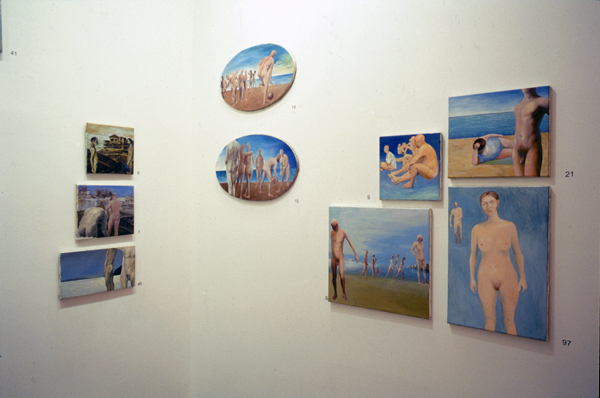Frigyes Kőnig has been painting works depicting bathers since 1999. A classic theme, the motif of bathing has long provided a framework for placing nude figures within a landscape setting. Kőnig’s landscapes are sometimes natural and sometimes constructed, and occasionally they are not landscapes at all, but rather a simple field of colour suggesting a sort of timelessness. Even so, visual experiences in nature are generally the source behind the paintings themselves, some of which are also patterned after photographs, with Lake Velence and the surrounding area being one point of inspiration. They concentrate on the unique situation that occurs when people arriving on the beach shed their clothes and take full responsibility for their bodies as they are – in all their natural beauty or ugliness – socializing with each other or just lazing in the sunshine. Kőnig admits that his intention is to focus on the conditions that arise when people encounter one of the ancient elements, hence encountering a state of infinity in the process.
The artist always deals with his subject in depth, creating variations on a given composition and rearranging form, colour and scale in several different paintings. He thoroughly explores each possible version in a process of deep analysis. His selected topics, Childhood Moments, the Esther series, his spatial analyses and still lifes run parallel throughout his repertoire and exert a mutual influence on one another. Analysis is the characteristic sign of a conscious painter - the “pictor doctus” - but for Kőnig creation in the act of painting itself is an act of instinct.
Frigyes Kőnig is a collector. In his book entitled Orbis Pictus, he collects artistic spatial analyses, and in Castles and Fortresses in the Carpathian Basin he assembles his own drawings, much in the same way as the collection of pipes and various other objects adorning his flat. The current series of works is also a collection, and a most unique one at that. What Frigyes Kőnig has done here is nothing less than to use the nude - that highest of all categories in the academic hierarchy of depiction – as the basis for unifying different possible modes in the art of painting.

